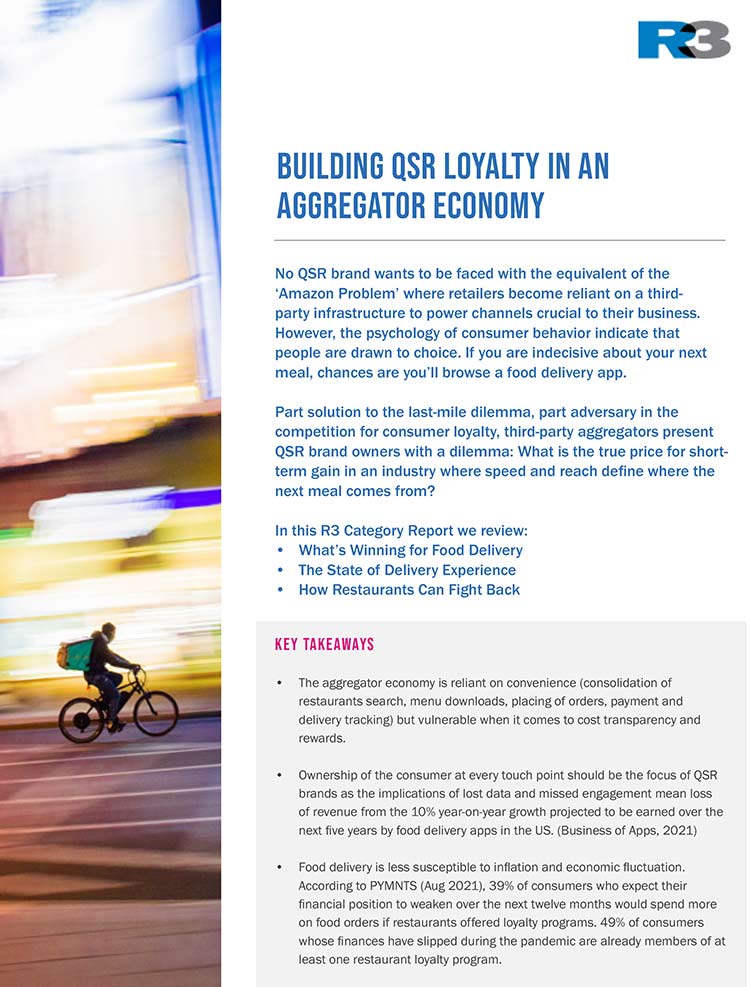No QSR brand wants to be faced with the equivalent of the ‘Amazon Problem’ where retailers become reliant on a third-party infrastructure to power channels crucial to their business.
However, the psychology of consumer behavior indicates that people are drawn to choice. If you are indecisive about your next meal, chances are you’ll browse a food delivery app. Part solution to the last-mile dilemma, part adversary in the competition for consumer loyalty, third-party aggregators present QSR brand owners with a dilemma: What is the true price for short-term gain in an industry where speed and reach define where the next meal comes from?
In this R3 Category Report, we review:
- What’s winning for food delivery
- The state of delivery experience
- How restaurants can fight back
Key Takeaways
- The aggregator economy is reliant on convenience (consolidation of restaurants, search, menu downloads, placing of orders, payment, and delivery tracking) but vulnerable when it comes to cost transparency and rewards.
- Ownership of the consumer at every touchpoint should be the focus of QSR brands as the implications of lost data and missed engagement mean loss of revenue from the 10% year-on-year growth projected to be earned over the next five years by food delivery apps in the US. (Business of Apps, 2021)
- Food delivery is less susceptible to inflation and economic fluctuation. According to PYMNTS (Aug 2021), 39% of consumers who expect their financial position to weaken over the next twelve months would spend more on food orders if restaurants offered loyalty programs. 49% of consumers whose finances have slipped during the pandemic are already members of at least one restaurant loyalty program.

